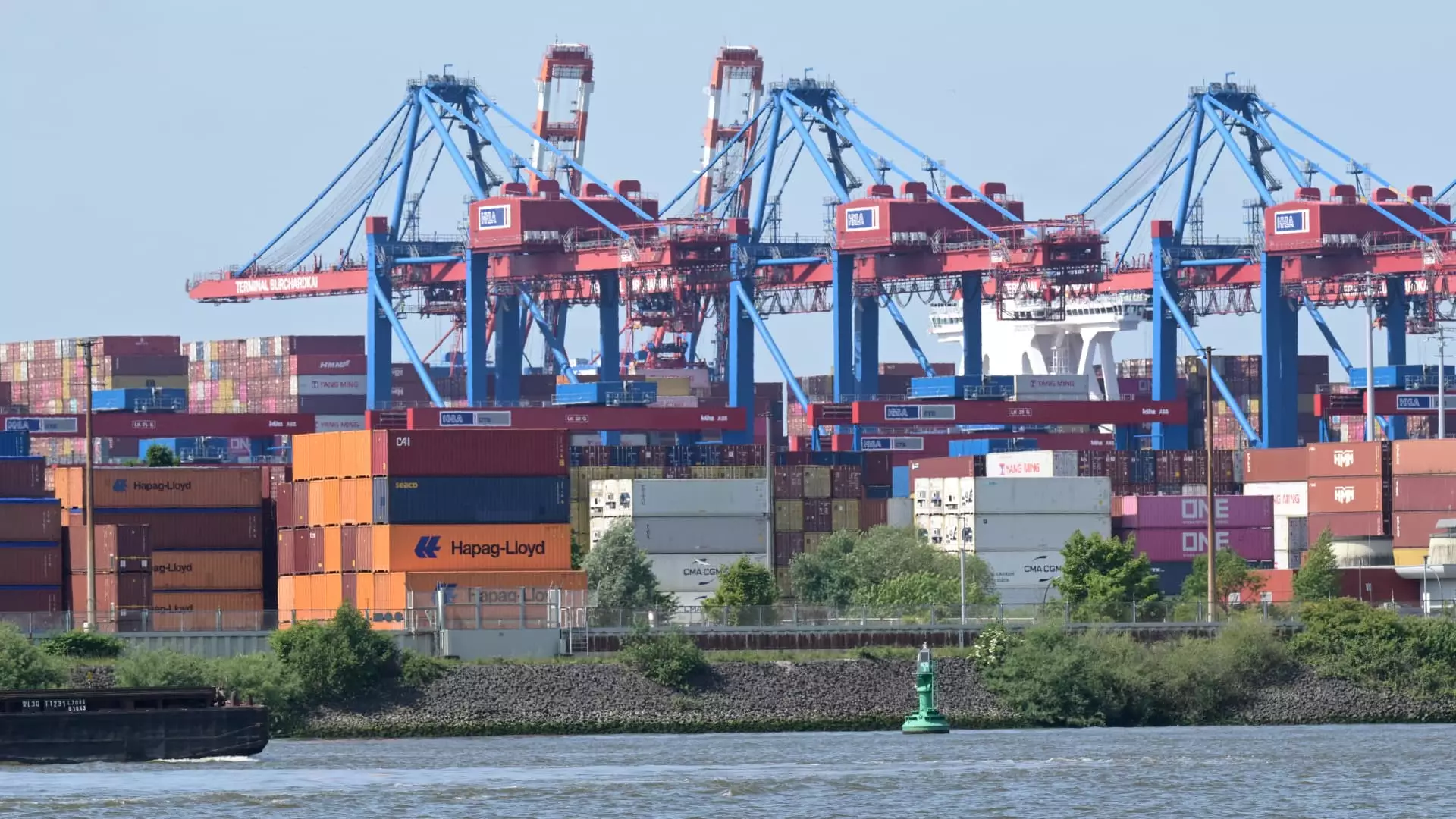As the deadline looms for U.S.-EU trade negotiations, the atmosphere is thick with uncertainty and palpable concern. The intricate web of economic interdependence between Washington and Brussels faces tumultuous waters, with tariffs and retaliatory measures threatening to unravel decades of cooperative trade relations. The impending imposition of up to 50% duties on EU imports by the United States signifies more than just a economic dispute; it signals a potential shift in the geopolitical landscape that underscores the fragility of multilateral agreements. The gravity of these tensions cannot be overstated, as the U.S. and EU collectively control a staggering 30% of global trade, shaping the global economy and influencing countless industries.
What makes this moment particularly alarming is the underlying friction over perceived unfairness in trade practices. U.S. critics, led by former officials like Donald Trump, have long argued that the EU leverages the imbalance in trade to benefit its own economy at America’s expense. These grievances—whether about subsidies, tariffs, or regulatory differences—have been heightened during negotiations, revealing fundamental disagreements about fairness and globalization’s future. The looming threat isn’t merely about tariffs; it’s about whether the transatlantic alliance can sustain itself amidst rising nationalism and protectionism that threaten to destabilize the rules-based trading system.
The Dance of Diplomacy: Hesitation and Half-Measures
Currently, diplomatic efforts resemble a cautious dance where each side edges forward while clearly wary of overcommitting. European leaders, notably Ursula von der Leyen, are conveyingly pragmatic, acknowledging that a comprehensive agreement within a 90-day window is infeasible. Their focus has shifted toward securing a “heads of terms” agreement—an outline, rather than a full-fledged treaty—that can serve as a foundation for future negotiations. This approach, while strategic, underscores a critical reality: the scope of these talks is limited, and the stakes are too high to expect quick, sweeping compromises.
On the American side, sentiments reflect a mix of skepticism and strategic patience. Treasury officials have expressed ambivalence about the prospects of striking a deal before tariffs come into effect, revealing the deep divides and the challenge of crafting agreements that satisfy both sides’ economic and political interests. The Trump-era focus on fairness and reciprocity continues to influence current policy, yet the lack of clarity on future steps fuels uncertainty among businesses and policymakers alike.
The broader issue here is whether these diplomatic efforts are genuine or merely temporary bandages on a festering wound. Partial agreements, or “heads of terms,” risk leaving unresolved issues that could rear their heads later, undermining trust and stability. The European Commission’s warning that “all instruments are on the table” indicates an unsettling readiness for escalation, which could spiral into trade wars that harm both economies in the long run.
Beyond the Immediate: The Broader Implications for Global Commerce
This turbulence has deeper implications, especially considering the global economic landscape. The EU’s trade surplus in goods juxtaposed with its deficit in services exemplifies the complex and asymmetric nature of modern trade. This imbalance fuels accusations from the U.S. that the EU’s economic structure disadvantages American industries, further complicating negotiations. The potential for retaliatory tariffs on a broad range of U.S. products risks retaliatory spirals that could cascade into worldwide disruptions, affecting supply chains and consumer prices globally.
Moreover, internal political dynamics play a crucial role. European unity is strained by divergent national interests, while the U.S. faces its own political pressures that influence trade policymaking. The absence of a clear, comprehensive agreement in the short term is a reflection of these internal complexities. It exposes how fragile multilateral trade relations have become, vulnerable to shifts in political rhetoric, electoral cycles, and nationalist sentiments.
In this context, the Biden administration’s approach—aiming for cooperation but constrained by systemic difficulties—appears cautious yet hopeful. The notion of negotiating “a good and ambitious transatlantic trade deal” remains a laudable goal, but it is increasingly clear that the path to such a deal is obstructed by mutual mistrust and divergent visions for the future of globalization. The question lingers: can the U.S. and EU find a sustainable middle ground, or are they inevitably headed toward increased confrontation that could reshape the global trade order?


Leave a Reply